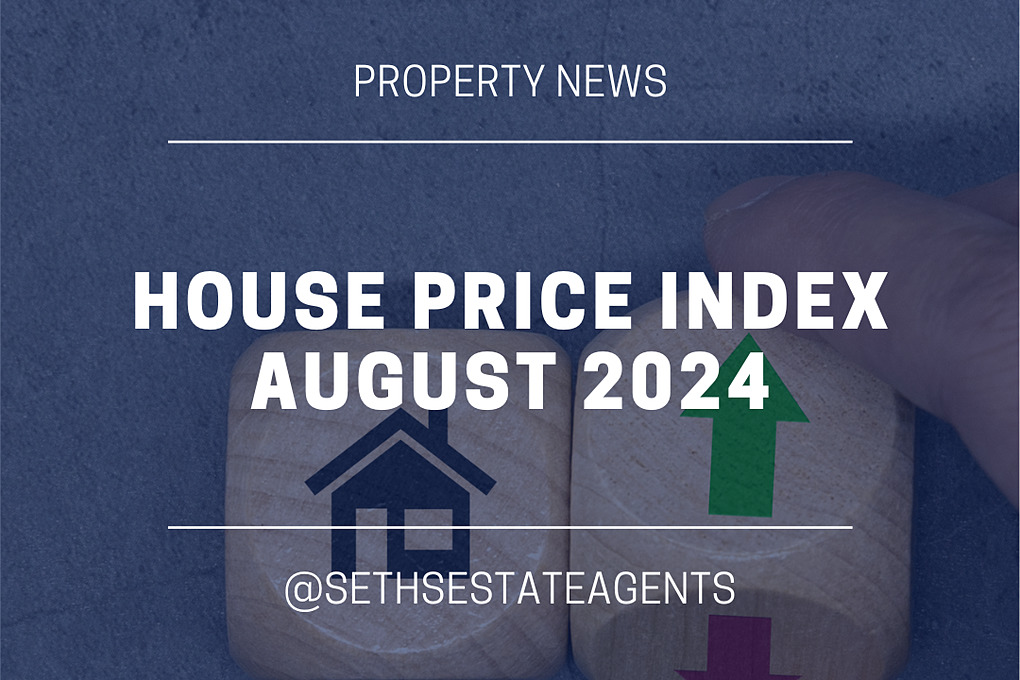UK House Price Index: August 2024

- Aug 28th 2024
The UK housing market is experiencing a gradual yet steady increase in prices. However, sellers must remain cautious about overpricing, as buyers are still highly sensitive to price adjustments.
Key Highlights
- Rising Prices: In the first seven months of 2024, UK house prices increased by 1.4%. Despite economic fluctuations, this trend suggests a stabilising market.
- Market Activity: All areas of market activity have seen year-on-year growth. However, the anticipated base rate cut in August has not significantly impacted market dynamics yet.
- Regional Inflation: While price inflation has improved across the UK, it remains slightly negative in southern England. Notably, London has turned positive with a modest 0.2% increase.
- Price Sensitivity: Approximately 20% of homes have seen their asking prices reduced by 5% or more, reflecting ongoing price sensitivity amongst buyers.
- Time to Sell: Homes without an asking price reduction sell in about 28 days, while those with a 5% or more reduction take around 73 days to sell.
- Future Projections: House prices are on track to be 2.5% higher by the end of 2024, with an estimated 1.1 million sales.
Current Price Trends
As of July 2024, the average UK house price stands at £266,400. This reflects a 0.5% inflation rate compared to the same time last year. By year’s end, the average price is expected to rise by another 2.5%.
Detailed Breakdown (May - July 2024)
- Overall Property: Prices increased from £265,400 in May to £266,400 in July, marking a £1,200 (0.5%) rise year-on-year.
- Detached Houses: Despite a slight drop, detached houses saw a year-on-year decrease of 0.5%, bringing the average price to £450,100.
- Flats: The average price of flats remained relatively stable, with a slight 0.2% decrease to £191,900.
- Semi-Detached and Terraced Houses: These property types experienced modest increases, with terraced houses seeing the highest rise of 1.1%, bringing the average price to £235,200.
Market Activity: A Year-On-Year Growth
Compared to 2023, the UK housing market is exhibiting stronger performance across all key indicators. Economic growth and rising consumer confidence have been pivotal in this upturn. Buyer demand has surged by 20% compared to the previous year, while new sales agreements have increased by nearly 25%.
Mortgage rates have dropped to an average of 4.5% for a 5-year fixed rate at 75% loan-to-value, further fuelling market activity. The stock of homes available for sale has also risen to a seven-year high, averaging 33 homes per agent. This increase in supply is expected to keep overall price inflation in check as we move into 2025. Sellers must remain realistic with pricing to avoid prolonged sales periods.
Impact of the August Base Rate Cut
The recent base rate cut, long anticipated by the market, has yet to significantly influence buyer demand, which remains consistent with the underlying trend of recent weeks. The true driver of the 20% increase in buyer demand is the comparative fall in demand during summer 2023 due to spiking mortgage rates.
Nevertheless, a modest uplift in new sales agreements was noted immediately following the rate cut, as cautious buyers took the opportunity. With sales agreements up by 23%, the market is on track to record 10% more sales than in 2023.
Price Adjustments and Market Sensitivity
Despite the overall positive trend, sellers must remain mindful of pricing strategies. A significant proportion of homes (1 in 5) listed in August had their asking prices reduced by 5% or more to attract buyers. This figure, while above average, is still lower than the 23% peak observed last autumn when higher mortgage rates dampened demand.
The time taken to sell a home is heavily influenced by the need for price reductions. Properties with no price reductions sell in approximately 28 days, while those requiring a 5% or more cut take an average of 73 days to sell. Therefore, setting the right asking price from the outset is crucial for a timely sale.
Outlook for 2024
The UK housing market is currently more balanced than it has been in the past five years. Lower mortgage rates, coupled with an improving economic outlook, have brought both buyers and sellers back to the market, supporting sales volumes and business plans across the industry.
The trajectory of mortgage rates will continue to play a crucial role in market dynamics. While rates are expected to remain above 4%, this level is likely sufficient to sustain the current level of home moves and sales. However, the ongoing health of the housing market will also depend on the growth of household incomes, which will be as critical as borrowing costs as we move into 2025.
The UK House Price Index remains a vital tool for understanding these trends, providing insights into both national and regional market movements.








